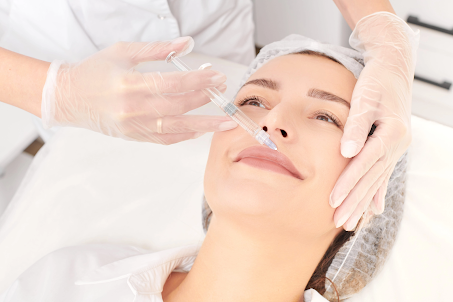What Happens if Botox for Sweaty Gland Fades?
Botox, widely known for its cosmetic benefits, has a powerful medical application in treating hyperhidrosis, a condition characterized by excessive sweating. This treatment can significantly reduce perspiration by blocking the nerve signals responsible for activating sweat glands. In this article, we’ll dive deep into what happens if Botox for sweaty glands fades, the science behind it, how your body reacts, and what steps you can take next. We'll also explore the specific dynamics of Botox for Sweaty Gland in Dubai, including how climate and personal habits might influence the treatment outcome.
Understanding the Role of Botox in Hyperhidrosis Treatment
Botox (botulinum toxin type A) works by temporarily blocking the chemical signals from the nerves that stimulate sweat glands. When injected into areas like the underarms, palms, feet, or face, it can significantly reduce sweating for an average of 4 to 6 months. Hyperhidrosis can affect people both emotionally and physically. It often interferes with daily activities, and people who suffer from it may find themselves avoiding social or professional situations. Botox offers an effective, minimally invasive alternative to surgical treatments, with a high satisfaction rate.
What Happens When Botox Fades?
When the effects of Botox start to wear off, the nerves begin to regenerate their ability to send signals to the sweat glands. Here's what you might experience:
Gradual Return of Sweating
The return of sweating isn’t sudden. Instead, you might begin to notice slight dampness in the treated area that slowly increases over weeks. It might start subtly, such as sweating in stressful situations or during exercise, and eventually reach a point where it feels similar to pre-treatment levels.
No Rebound Effect
One important fact to understand is that Botox doesn’t worsen sweating once it fades. There's no rebound effect where your glands overcompensate and produce more sweat than before. This is a common myth. Your body simply returns to its natural baseline sweating level before treatment.
Variation in Gland Reactivation
Not all sweat glands become active at once. You may notice that only part of the treated area begins sweating again. This patchy reactivation is a result of the uneven way nerves regenerate and start re-signaling the glands. It’s completely normal and typically balances out over time.
Psychological Impact
If Botox is significantly improving your quality of life, the return of excessive sweating can feel like a step backward emotionally. Some individuals report feeling frustrated or anxious as symptoms return. Understanding that the effect is temporary and that retreatment is possible can help reduce this anxiety.
Factors Influencing the Return of Sweating
Several factors determine how quickly Botox fades and how the body responds after it:
Metabolism
People with faster metabolic rates tend to break down Botox more quickly. This means their results may last slightly shorter compared to others.
Physical Activity
Athletes or individuals with very active lifestyles might notice a quicker fade due to increased circulation and metabolism.
Amount of Botox Injected
If a smaller dose was used initially, the effects might not last as long. However, this is typically calibrated by the medical professional during the first few sessions.
Sweating Triggers
Living in a hot and humid climate, like Dubai, can influence how you experience Botox’s fading. Even with Botox for the Sweaty Gland, the intense climate and need for frequent hydration can lead to more noticeable sweating once the treatment wears off, making follow-ups more important.
How to Manage the Fade-Out Period
Track the Onset of Return Symptoms
Keep a journal or log to track when you begin to notice sweating again. This helps in scheduling timely follow-up treatments and also gives you better control over managing symptoms.
Use Clinical Strength Antiperspirants
As Botox fades, supplementing with clinical-strength antiperspirants can help maintain dryness during the transition.
Dress Strategically
Opt for breathable, moisture-wicking fabrics to help manage sweat. Layering and choosing darker colors can also make sweat less visible as symptoms return.
Mind Your Triggers
Stress, spicy foods, and caffeine can exacerbate sweating. Identifying and minimizing these can help you better cope while waiting for the next Botox session.
Schedule Regular Maintenance
Most professionals recommend maintenance injections every 4–6 months, or sooner if symptoms return earlier. Regular treatment can help maintain a steady level of dryness and prevent the full return of excessive sweating.
Emotional and Social Aspects
For many, the return of sweating can trigger embarrassment or social discomfort. If Botox had significantly improved your confidence, the fade-out period might be emotionally taxing.
It helps to:
-
Remind yourself this is temporary.
-
Talk to a specialist about adjusting future treatment schedules.
-
Join online forums or support groups where others share similar experiences.
Conclusion
When Botox for sweaty glands fades, the return of symptoms is gradual, manageable, and does not pose any health threat. While it can feel disappointing after experiencing relief, it’s important to remember that this is a temporary state and can be addressed with scheduled maintenance treatments. Keeping track of your symptoms, knowing how to manage the transition, and staying in touch with a healthcare provider will help you maintain long-term relief.
.jpg)



Comments
Post a Comment